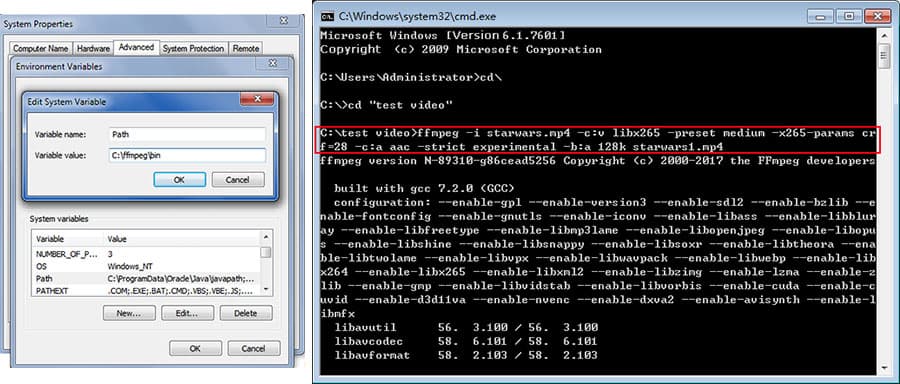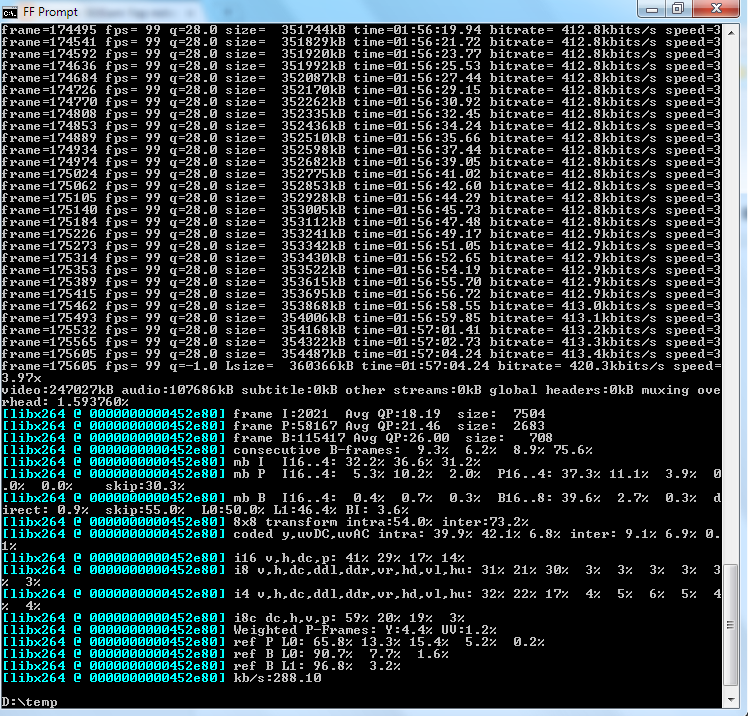

Understanding Distributed Version Control Systems.Understanding and Eliminating Technical Debt.Building Serverless Applications in Azure.Azure Container Instances: Getting Started.The command ffmpeg -codecs will print every codec FFmpeg knows about. This will make a Matroska container with a VP9 video stream and a Vorbis audio stream, essentially the same as the WebM we made earlier. Microsoft Azure Developer: Implement Azure Functions (AZ-204) The same can be done to change the video as well as the audio stream: ffmpeg-i input.mp4 -c:v vp9 -c:a libvorbis output.mkv.Versioning and Evolving Microservices in ASP.NET Core.Microservices Architecture: Executive Briefing.Microsoft Azure Developer: Deploying and Managing Containers.

Hope someone finds this helpful, and if there is an even better way to achieve the same results (which I’m sure there is), do let me know in the comments. Now we are finally ready to concatenate our files, and we can do that with the following syntax: ffmpeg -f concat -i inputs.txt -c copy output.mp4Īnd that’s all there is to it. Let’s create inputs.txt with the following content: file 'part1.mp4'

To use the concat demuxer we first need to create a simple text file containing the details of each file we want to concatenate.
#Ffmpeg video codec mp4
There are a few different concatenation options in FFmpeg, and in our case it is the “concat demuxer” we need, as the “concat protocol” won’t work with mp4 files. So now we have our three parts, we need to join them together. If you’re a C# programmer like me, you’ll just fire up LINQPad and enter a quick expression to calculate the difference between the start and end times: TimeSpan.Parse("1:02:20") - TimeSpan.Parse("0:10:50")Īnd of course the final parameter is the output file. The slightly tricky one is the -t parameter, which is not the end time of the section you want to cut, but the duration. The -i switch introduces the input file name, the -ss switch indicates the start time of the section we want to cut. Now most of that is probably self-explanatory. And then we stitch them all back together again. First we create three shorter mp4 files containing just the portions we want to keep. In this example, the file we want to edit is called input.mp4. For convenience you’ll probably want to make sure ffmpeg.exe is on your PATH.
#Ffmpeg video codec 32 bit
I used the static 32 bit Windows version from here. It took me a few goes to find out how this can be done, but eventually I got something working.įirst of all, make sure you have downloaded a build of FFmpeg. I recently needed to cut a few sections out of a pre-existing MP4 file to make it a bit shorter. You can use it to perform all kinds of amazing manipulations on video (and audio) files, if only you can work out the correct command line arguments.


 0 kommentar(er)
0 kommentar(er)
